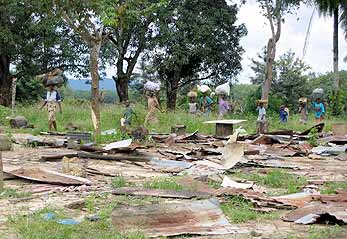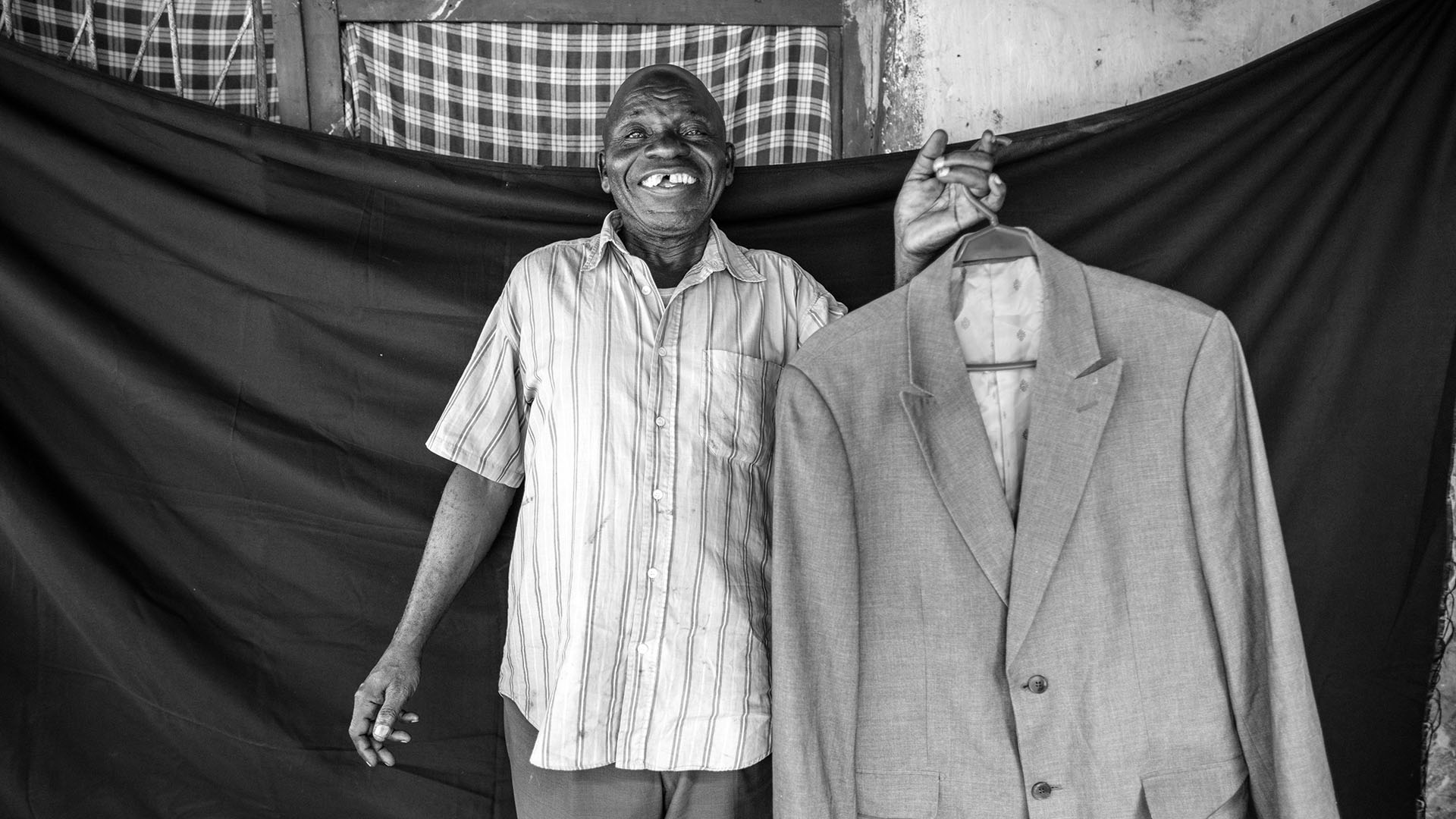Displaced people return as central Liberia calms down
Displaced people return as central Liberia calms down

GBARNGA, Liberia, Oct 1 (UNHCR) - A UN inter-agency mission dispatched to central Liberia on Tuesday reported that fighting has died down in the region and that displaced Liberians were drifting back to their homes.
The mission was one of several fielded to look into the security situation in the country following the deployment of a West African force of 3,500 men and the departure of President Charles Taylor into exile in Nigeria in August.
Initial assessments show that while the situation remains fragile, it has improved dramatically in large areas of the country. The UN refugee agency is optimistic that conditions will progress further once the 15,000 UN peacekeepers begin deploying across the country this month.
"Most villages visited were practically empty and quiet, but you see a number of people there, mostly women and children," said Jo Hegenauer, UNHCR's emergency co-ordinator for Liberia. The clinic of aid agency Médecins du Monde at Gbarnga, located in Bong county 180 km north-east of Monrovia, was crammed with patients on a day designated for paediatric cases. Gbarnga had a pre-war population of 50,000.
At Phebe, villagers reported that some 18,000 residents had returned and more people were coming back every day. A large number of internally displaced people, or IDPs, have gathered in private homes. The UN team saw the arrival of some 40 to 50 people at Phebe in less than one hour. It was told that there was an urgent need of food and medicine.
Hegenauer said the IDPs reported that there had been no skirmishes in recent days between Taylor militias and fighters of the Liberians United for Reconciliation and Democracy (LURD) in Bong and Nimba counties. But the IDPs said that occasional gunfire and explosions set off by looters had been scaring off villagers, particularly in Lofa county.
A LURD general at Gbarnga said aid agencies were welcome to operate in areas controlled by the rebel group, promising unimpeded access and free passage at checkpoints manned mainly by teenaged soldiers.
Fighting broke out in Bong and Nimba counties in mid-September, forcing residents from their homes and sending into Guinea some 7,000 Liberians who said they feared harassment, looting and raping of women by combatants. UNHCR in Guinea said the rate of arrivals was tapering off this week.
The refugee agency has registered some 5,000 of the newly arrived Liberians in Guinea and is transporting them to refugee camps inland. Some of the Liberians stayed only temporarily along the Guinea side of the border. Guinea hosts 133,000 of the 315,000 Liberian refugees in West Africa.
In Buchanan, 100 km south-east of Monrovia, a general of the rebel group MODEL, or Movement for Democracy in Liberia, assured a UNHCR team of unhindered humanitarian passage to the main town of Zwedru in Grand Gedeh County along the border with Côte d'Ivoire. MODEL controls eastern Liberia.
A MODEL commander told another inter-agency mission last week that his fighters occupying the UNHCR office in Zwedru would leave once the refugee agency resumed operations in the region. Relief agencies have reported that 3,000 to 4,000 Liberian refugees had returned to the Grand Gedeh since late August.








